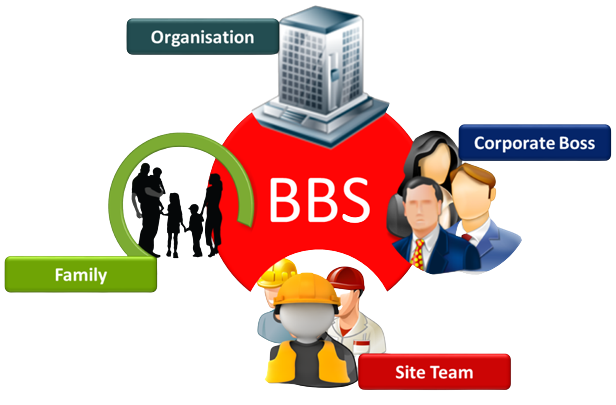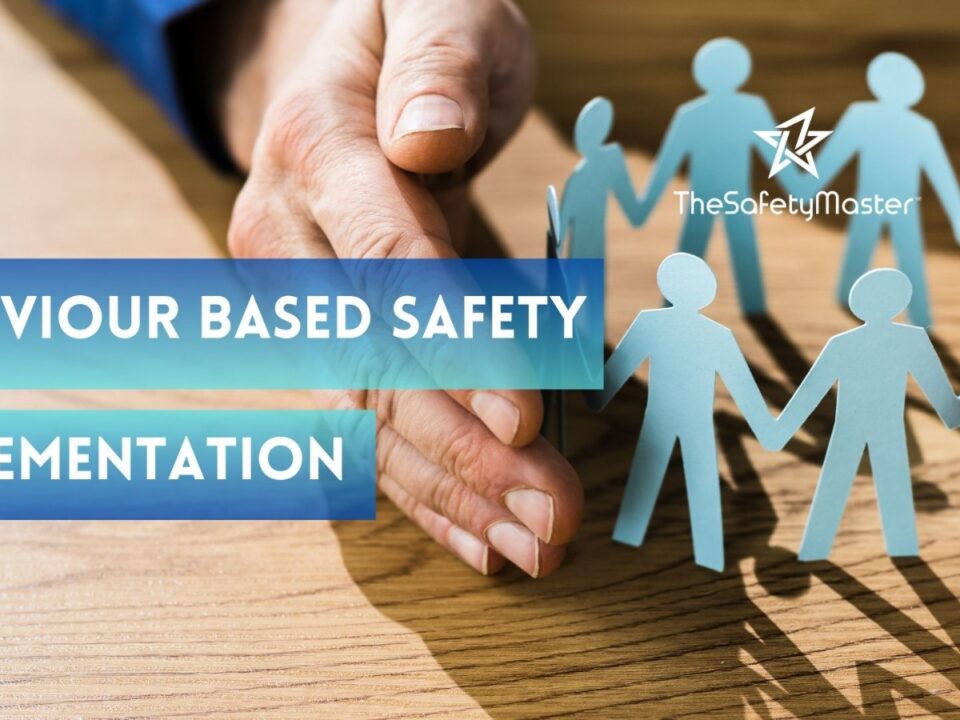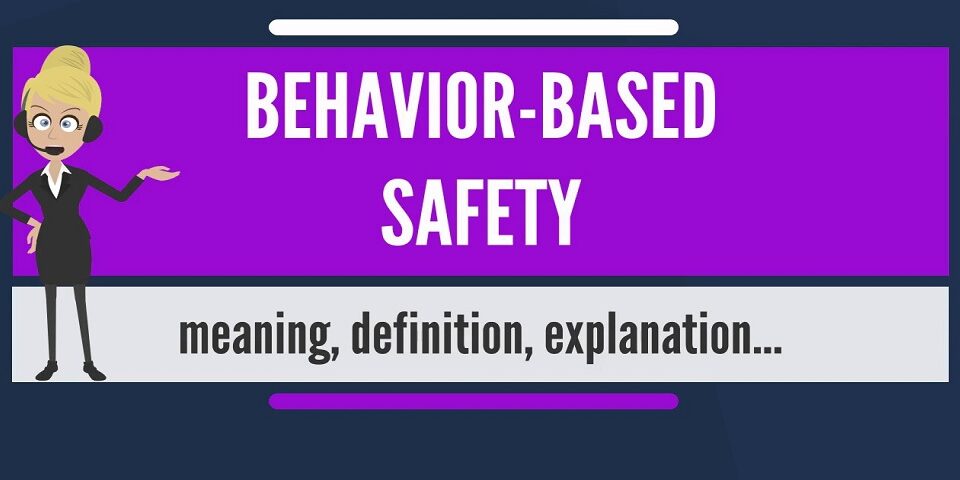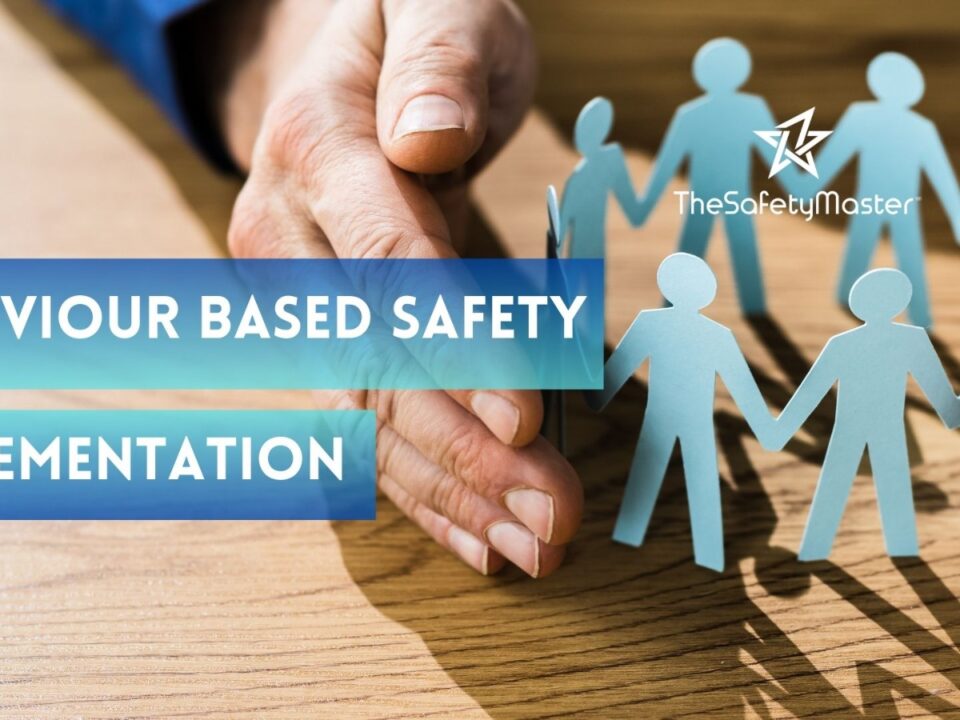Discover the Power of Behavior-Based Safety: Transform Your Safety Culture Today

Unveiling the Importance of a Comprehensive Safety Audit for Factories as per Factory Act and BIS 14489 Guidelines
July 14, 2023
(PPE) personal protective equipment overview
July 14, 2023Discover the Power of Behavior-Based Safety: Transform Your Safety Culture Today
Understanding Behavior-Based Safety: An Overview
Behavior-based safety is a revolutionary approach that aims to transform safety culture within organizations by focusing on human behavior as the key determinant of workplace accidents and incidents. It acknowledges that safety is not solely dependent on external factors such as equipment or protocols, but rather on the choices individuals make and the actions they take.
In this comprehensive overview, we will delve into the fundamental principles and concepts underlying behavior-based safety. By understanding these key elements, organizations can unlock the tremendous power within their workforce to create a safer environment. Rather than viewing accidents as inevitable occurrences, behavior-based safety empowers employees to actively participate in preventing them through thoughtful decision-making and responsible actions.
The Foundation of a Successful Safety Culture
Achieving and maintaining a successful safety culture within an organization is paramount for ensuring the well-being and productivity of its workforce. This foundation sets the stage for a harmonious and secure working environment where employees feel empowered to prioritize safety in all aspects of their professional lives.
At its core, a successful safety culture is built upon several essential pillars. Firstly, leadership commitment plays a pivotal role. When leaders demonstrate unwavering dedication to safety through their actions and decisions, it sets the tone for the entire organization. Additionally, effective communication is crucial; clear and concise messaging about safety expectations fosters mutual understanding between management and employees. Moreover, fostering trust among team members encourages open dialogue about potential hazards and promotes collective responsibility.
The Power of Behavior: Unleashing Safety Potential
Behaviors are the building blocks of any safety culture. They hold tremendous power to create a safe and secure working environment. When employees understand the impact of their behaviors on their own safety and the safety of their colleagues, they become empowered to make conscious choices that prevent accidents and mitigate risk.
Unleashing the full potential of behavior requires a shift in mindset. It’s about fostering a culture where safety is not seen as an obligation, but rather as an opportunity for growth and improvement. By recognizing that every action has consequences, individuals gain a deeper appreciation for how they can actively contribute to a safer workplace. When employees embrace this understanding, they become catalysts for positive change, setting off a ripple effect that spreads throughout the organization.
Identifying and Analyzing Unsafe Behaviors
When it comes to developing a robust safety culture, one cannot overlook the importance of identifying and analyzing unsafe behaviors. By doing so, organizations can gain valuable insights into the root causes of accidents and near misses, enabling them to take proactive measures to prevent future incidents.
In order to effectively identify unsafe behaviors, it is crucial to create a comprehensive observation program that involves all levels of the organization. This program should encourage employees to actively observe their colleagues’ actions, providing a platform for reporting any behavior that deviates from established safety standards. By fostering a culture of open communication and non-punitive reporting, organizations can create an environment where employees feel empowered to speak up and contribute towards enhancing safety.
Communicating Expectations: Setting Clear Guidelines
Effective communication is the cornerstone of any successful endeavor, and when it comes to safety, it is of utmost importance. In order to foster a culture of safety within an organization, setting clear guidelines and communicating expectations is essential. Clear guidelines provide employees with a roadmap for safe behavior and create a common understanding of what is expected from them.
When communicating expectations, it is crucial to be precise and unambiguous. Clearly outline the specific behaviors that are expected from employees in order to maintain a safe work environment. Use language that leaves no room for interpretation or confusion. By doing so, you empower your employees with the knowledge they need to make informed decisions about their actions.
Inspiring & Motivating Employees towards Safety Excellence
Achieving safety excellence requires more than just establishing guidelines and expectations. It requires inspiring and motivating employees to actively participate in creating a safe work environment. By fostering a sense of purpose and empowerment, organizations can ignite a passion for safety within their workforce.
One effective way to inspire employees is through leadership by example. When leaders demonstrate a genuine commitment to safety, it sends a powerful message that resonates with employees at all levels. Encouraging open lines of communication allows for the exchange of ideas, concerns, and suggestions, creating a collaborative environment where safety becomes everyone’s responsibility.
Training, Coaching, and Continuous Improvement: Key Drivers for Success
When it comes to transforming your safety culture, training, coaching, and continuous improvement are unequivocally indispensable. These three pillars serve as the backbone of creating a workforce that is not only knowledgeable about safety protocols but also committed to implementing them consistently.
Effective training programs equip employees with the necessary skills and knowledge to identify potential hazards and take proactive measures to mitigate risks. By investing in comprehensive training sessions that incorporate interactive elements and real-life scenarios, employees become well-prepared for any safety challenges that may arise.
However, training alone is not enough. Coaching plays a vital role in reinforcing the lessons learned during these sessions. Assigning experienced mentors or safety coaches to guide employees through their journey enhances their understanding of safety principles while fostering an environment of continuous learning.
Moreover, continuous improvement initiatives ensure that the organization’s safety practices stay up-to-date with evolving industry standards. Encouraging feedback loops from employees allows for the identification of areas that require enhancement or innovation. This iterative process enables organizations to adapt swiftly and proactively address emerging risks.
In summary, by prioritizing robust training programs, implementing effective coaching strategies, and embracing a culture of ongoing improvement, organizations can empower their workforce to champion safety excellence. This holistic approach not only ensures compliance but also cultivates a sense of pride among employees who actively contribute towards building a safer workplace.
Empowering Employees: Creating a Sense of Ownership
Empowering employees to take ownership of their safety and the safety of others is a crucial element in building a strong and resilient safety culture. When individuals feel a sense of ownership, they are more likely to be proactive, vigilant, and committed to upholding safety standards.
One effective way to create this sense of ownership is through active involvement and participation. Encouraging employees to have a voice in shaping safety policies, procedures, and initiatives fosters a feeling of empowerment. By including them in decision-making processes, their perspectives are valued, making them feel respected and invested in the overall success of the safety program.
Evaluating and Measuring Safety Behavior
Measuring safety behavior is a critical component of any behavior-based safety program. It allows organizations to assess the effectiveness of their safety initiatives and identify areas for improvement. However, evaluating safety behavior goes beyond simply counting incidents or accidents. It involves a comprehensive approach that takes into account various factors.
One way to evaluate safety behavior is through the use of leading indicators. These are proactive measures that provide insights into the future performance of an organization’s safety culture. Examples include the number of near misses reported, employee participation in safety training programs, and regular safety inspections conducted. By tracking leading indicators, companies can gain a better understanding of their overall safety performance and take necessary actions to prevent future incidents.
Celebrating Successes and Reinforcing Positive Behavior
In the journey towards building a strong safety culture, celebrating successes and reinforcing positive behavior are essential components. By acknowledging and appreciating achievements, organizations can create a momentum that drives continuous improvement and motivates employees to consistently prioritize safety.
Recognizing individual and team efforts is crucial in cultivating a positive environment. Implementing an effective reward system can be instrumental in this process. Whether it’s through verbal praise, certificates of recognition, or tangible rewards like gift cards or company-wide celebrations, these gestures go a long way in making employees feel valued for their commitment to safety.
Additionally, organizations can leverage technology to amplify the impact of celebrating successes. Utilizing digital platforms to share success stories, highlighting individuals who have exemplified outstanding safety behavior, or creating internal newsletters that showcase achievements can foster a sense of pride within the workforce. Such initiatives not only inspire others but also reinforce the importance of safe practices as part of the company’s core values.
With Best Wishes
Sanjeev Paruthi
TSM TheSafetyMaster® Private Limited
Unit No 221-451-452, SPL1/J, 2nd & 4th Floor, Sunsquare Plaza Complex, RIICO Chowk, Bhiwadi 301019, Rajasthan, India
Phone: +91 1493 22 0093
Mobile: +91 7665231743/9413882016
Email: info@thesafetymaster.com




